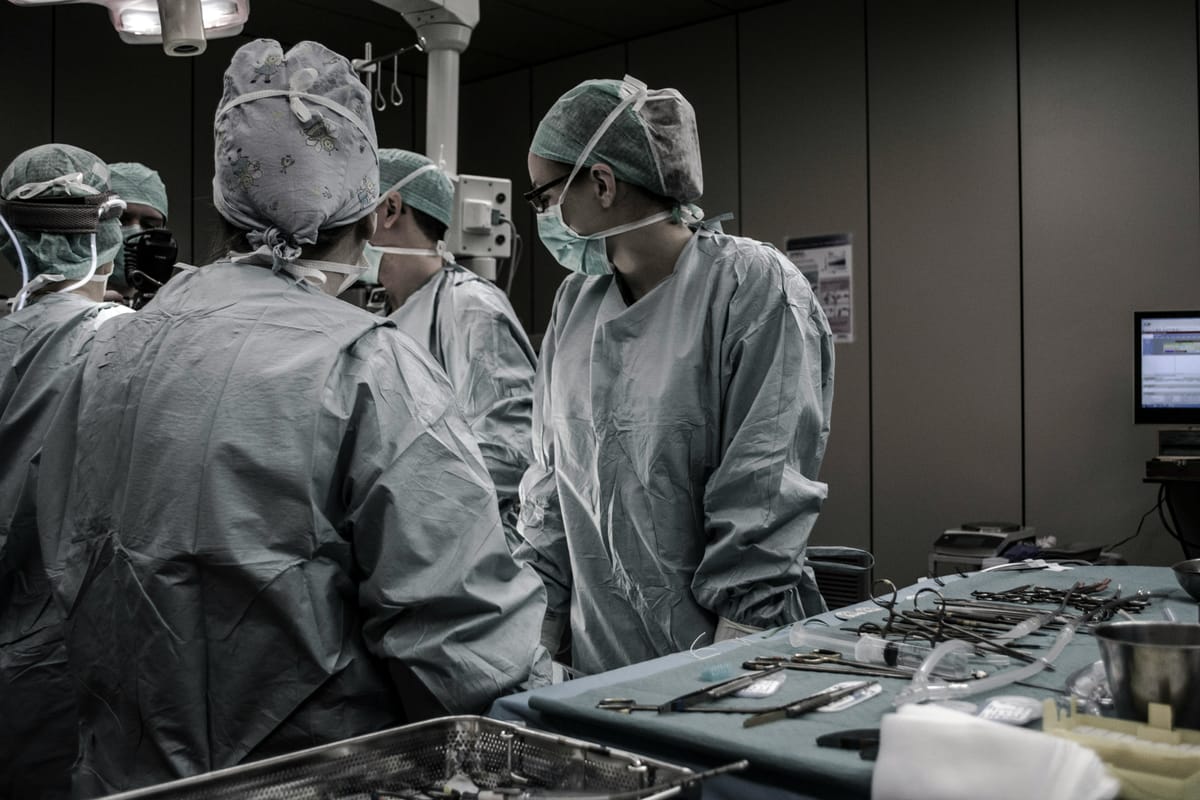The Lifesaving Art Of Heart Transplants

Arguably no other human organ is as emotionally charged as the heart. When we speak of the heart, we often refer to it not only as a muscle but as the center of many passionate emotions. The most obvious association we tend to make with the heart is love. It is a well-known fact that love, which we generally classify as an emotion, is regulated by the brain rather than the heart. Still, the heart has become the universal symbol of love, perhaps because it is through the heart that we experience many of the physical sensations of the phenomenon. Love is a concept that has been studied for centuries, and many psychologists such as Bowlby and Maslow have stated that love is a human necessity. While it remains true that love encompasses emotion, it would be ignorant, not to mention impossible, to force the full concept of love to adopt a single-term definition. Likewise, the heart is more than just an organ; it is the soul of the physical body, the generator of life. As humans, our bodies are essentially in need of hearts the same way our spiritual being requires love, and although many would argue that love can not be replaced, it is a sheer miracle that the heart can be.
Overview
An introduction to heart transplants
A heart transplant is a procedure during which the patient’s failing heart is replaced by a healthy one from a suitable donor. This type of procedure is generally used to treat patients suffering from end-stage heart failure, as well as other severe heart conditions that cannot be treated with medications and therapeutics. ‘Heart failure’ refers to when the heart is at a stage where it fails to pump out enough blood to sustain the body, however, it should be noted that it does not imply that the heart has stopped working entirely. It is a condition that usually progresses over time, and it may be caused by a variety of medical issues such as heart valve disease, myocarditis, and coronary artery disease (CAD). Many of these conditions are caused by a long list of poor lifestyle factors such as smoking, high blood pressure, obesity, sustaining a diet high in fats and cholesterol, and physical inactivity.
It is not uncommon that patients suffering from heart failure have to wait months, if not years before they are able to receive a heart transplant. The length of the wait depends on several reasons, however, the defining factor is almost perpetually the lack of available donor hearts. Additionally, the number of new heart transplant candidates continues to grow despite successful medical therapies for heart failure.
Performing A Heart Transplant
Understanding the basics of the procedure
The concept of replacing an organ may seem rather simple, and while it sounds like a rather straightforward procedure -removing and replacing- a heart transplant is a highly advanced and critical procedure. The process begins the very minute a heart becomes available. The retrieval surgeon travels to the hospital where the donor's heart is stored, and after assessing its suitability, he brings it back to the transplant center. The heart can last no more than six hours once it has been removed from the body, hence it is essential to begin the operation instantly. Once the patient has been put under anesthesia and is connected to a ventilator the surgeon will make an incision in the patient’s chest, dividing the breastbone to access the heart and the major blood vessels. The patient will be connected to a heart-lung bypass machine, which serves to momentarily take over the function of the heart while the diseased heart is being removed. The surgeon will proceed to sew the donor heart into place, connecting it to the patient’s blood vessels. Once blood flow has been restored, the new heart will start beating.
The Art Of Replacement
A brief history of the first heart transplant
The evolution of organ transplants has been regarded as one of the greatest advances in medical history, and for good reasons. In 1954 the first human organ, a kidney, was successfully transplanted by Doctor Joseph E. Murray and associates at what was formerly known as Peter Bent Brigham Hospital in Boston, Massachusetts. The patient who received the transplant was suffering from chronic kidney failure, and the donor was his identical twin brother. Despite many previous attempts, this was the first instance where the recipient had survived the organ transplantation. This was seen as a huge step within the field of organ transplantation, and this procedure was what laid the grounds for the many organ transplants that were to come. Throughout the sixties, various successful transplants were performed, specifically transplants of the liver, pancreas, and eventually, the heart.
It was roughly a decade after the first kidney transplant that the world saw the first human-to-human heart transplant, performed by South African surgeon Christiaan Barnard. The procedure gained large amounts of media attention both on the day of the operation and during the years that followed. The operation, which would come to serve as the blueprint for all future heart transplants, was carried out on December 3, 1967, at Groote Schuur Hospital, Cape Town. The recipient was 53-year-old diabetic Louis Waskansky, who was suffering from severe cardiac failure due to ischemic heart disease. Waskansky agreed to the operation without any hesitation, as his days had already been numbered, and this was perhaps his only chance to survive. The donor was a 25-year-old woman, named Denise Darvall, who had been fatally injured in a car accident. Generally, brain death is used as the main criterion for declaring a patient dead. Nevertheless, to be fully sure that he would not be faced with medico-legal problems, Barnard decided to wait for the heart of Darvall to stop beating as well before removing it for transplantation. It took approximately six minutes for her heart activity to come to a halt. Once her heart had been retrieved from her chest, Waskansky’s heart was removed. In Barnard’s retelling of the event, he stated “[...] for the first time in my life, I stared into an empty chest”. At this stage of his career, he had carried out hundreds, if not thousands of heart operations, yet he had never before looked into a human chest without finding a heart. “At that moment, the full impact of what I was attempting became abundantly clear to me,” says Barnard. The transplantation had been successful. The heart of Denise Darvall continued life through the body of Waskansky.
Unfortunately, Waskansky’s life came to an end only 18 days after the operation. His death was however not due to the transplantation. Waskansky had, in addition to his heart condition, had sepsis in his calf which had occurred due to the needles that had been inserted to drain the edema fluid which was caused by the heart failure. This infection is an important factor because, according to Christiaan Barnard, Waskansky’s death was predominantly caused by the spreading of said infection. The immunosuppressive drugs which had been used to prevent rejection of the heart as a foreign protein had led to the weakening of his immune system, which had allowed for the infection of the calf to spread to his lungs, resulting in pneumonia, which was declared as Wasnaksky’s ultimate cause of death. Thus declaring that what had taken claim of his life was technically unrelated to the heart transplant.
The Impact of Barnard’s Achievement
Impacts of the first heart transplant
It is nearly 60 years since Barnard took the first step by planting the seed of what would soon become the number one procedure for treating the fatal condition that is heart failure. Many thousands of people are annually being given a second chance at life through the wonders of heart transplants. A heart transplant is still carried out almost the same way as Barnard and his associates went about with the procedure the very first time. Still, much has happened since Barnard’s first, and many advances in technology and post-operative treatment have since then been accomplished. Overall, these advances have significantly improved the success rates, quality of life, and long-term outcomes for heart transplant recipients.
Holding Life In The Palm Of Your Hand
Ethical discussion regarding heart transplants
In terms of education, workload, and skills, being a surgeon is considered one of the most difficult and demanding professions. Most people are aware that the practice of medicine, like many other sciences, is highly intellectually challenging, but what many perhaps fail to recognize is that medicine is more than just a science. Medicine is, at its very essence, rooted in creativity. Practicing medicine requires courage and innovation; daring to take risks that have never been taken before. Performing surgery could therefore be considered a form of art. Surgery is the art of preserving human life. It is the art of alleviating physical suffering. I call it art because surgery is not something you can learn by reading a textbook. You can not become a surgeon without performing surgery; a rather obvious statement, yes, but what it implies is that surgery is not based solely on repeating practices. It is unpredictable; you can never be certain that every procedure is going to look the same. In addition to having extensive knowledge and mastering the skills of technique and precision, a good surgeon must know how to improvise. He must be daring enough to try. Daring enough to risk causing death in order to potentially save life. The only statement we can make about life is that if you live, you will die. The key word in this sentence is if. There can be no statement such as “you will live.” Life will never be a certainty, as it ultimately exists on one condition; death. Death is our default setting, we are in order not to be. Life is a fight against the eventual expiration of it, which is why I believe that every action that can be made to preserve life is a miracle. The ability to continue a life with the beating heart of a dead person through the body of another is therefore a medical wonder.
There have always been extensive debates regarding the ethical aspects and implications of various medical procedures. The many ethical dilemmas of surgery are simply prone to occur, especially when discussing heart surgery, as the practice ultimately becomes a question of meddling with the divine, and we begin to ask ourselves “Do surgeons have the right?” Because we are balancing the sharp edge between life and death, the topic becomes very intricate. There is of course no objective answer to the question, but anyone who believes in the importance of protecting and prospering human life should agree that saving a life by recovering a heart from an already dead person is nothing less than a man-made miracle.
Additionally, what we have to understand is that the beating of a heart is not equivalent to life. There is indeed no life without a heart, but the heart itself does not correspond to life. What binds them together is the mind. The mind and the heart are dependent on each other; one can not exist without the other. When a person is considered brain dead, the heart can not continue beating for long on its own. Why then, should a functioning heart not be given the opportunity of continuing this fight against death which we recognize as life? As Christiaan Barnard said, “It is infinitely better to transplant a heart than to bury it to be devoured by worms.” It is of course a matter of perspective, but there would be no conflict if it was not for the fact that we, as humans, are driven by the objective of staying alive.




